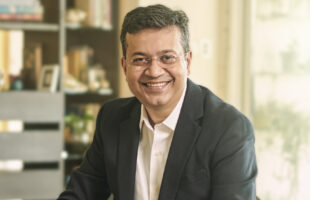Australia: TV Industry’s decline in Down Under
Following the end of analogue broadcasting in December 2013, Australians have been able to access many more Free-to-Air TV channels as digital broadcasts. This has dispersed viewing preferences among consumers, with the result that TV programming is more fragmented.
Although there are more channels available, the number of viewing hours has remained relatively stable for a number of years, and as a result, individual channels and particularly specific shows have seen declining viewer numbers. Viewing habits have also been affected by the advent of catch-up TV services, which have been made available from the main broadcasters for two to three years.
In addition, the launch of subscription video services from operators such as Presto, Stan and Netflix will further erode linear TV viewing as subscribers can now choose to watch their desired programmes. The shift away from linear TV has seen the penetration of TV in households fall to about 88% by early 2015. It was also reported that the Australian film and TV industries have shrunk 12% in the past five years (Deloitte Access Economics).
Australia has five major free-to-air (FTA) networks which comprises of Australian Broadcasting Corporation (ABC), Seven Network, Nine Network, Network Ten and SBS. Each network initially had a single channel in a geographic area, though with the advent of digital television each network now has one extra SD multichannel – 7Two, GO!, Eleven and SBS Two respectively, and one HD multichannel – 7mate, GEM, One and SBS HD. With the exception of SBS, each commercial broadcaster also has one SD datacasting channel − TV4ME, Extra and TVSN respectively; SBS instead broadcasts NITV free-to-air.
Australia has two main government-owned TV channels − ABC and SBS, along with multichannels – ABC2, ABC3 and SBS Two, which are both available on free-to-air via Optus D1 satellite. Viewers in remote parts of Australia could also access Seven Central and Imparja Television, or WIN WA and GWN in Western Australia, through the DVB-S2 free-to-view Optus VAST service.
Australia pay-TV industry consists of the dominant cable and satellite television provider Foxtel and its regional subsidiary Austar, with some smaller cable and satellite competitors operating in limited areas. Other providers of Internet television in Australia offer free content or PPV.
Key Developments
In July, Audio Network Australia integrates fully into Audio Network Group. The international music company has acquired a 49% shareholding in Audio Network Australia Pty Ltd from co-founder Linda Tizard. The acquisition demonstrates the Group’s continuing determination to expand globally and develop its vision whilst retaining the innovative and creative force behind the group’s success.
In that same month, ABC1 underwent channel rebranding. The ABC’s main television channel, ABC1, is being renamed ABC and will have a new tagline, encompassing a social media hashtag for the first time − #ourABC. The public broadcaster has labelled the rebranding exercise “bold, simple, raw and real”. It includes new on-air station identification material in the trade, featuring everyday Australians and ABC personalities.
In September 2014, Australia’s Nine partnered Fairfax Media to launch SVOD service, StreamCo. It was expected to launch this year and offers a broad range of local and international programming to subscribers for a fixed monthly subscription fee and no minimum term commitment.
In October 2014, Screen Australia and the Korean Film Council (KOFIC) signed an official Memorandum of Understanding (MoU) in Busan. The MoU signing was part of the process to enable official film and television co-productions to be made by the two countries. Screen Australia and KOFIC will implement the Co-production Arrangement once the Korea-Australia Free Trade Agreement, containing an Annex on Audiovisual Co-production, is in place.
In November 2014, Australian News Channel Pty Ltd and Lightning International Ltd announced the launch of Australia Channel, which will present the best of Australian news, business and sport – backed by the resources of SKY NEWS Australia, a joint venture of Australia’s two biggest free-to-air networks Seven and Nine and BSkyB.
In March 2015, SVOD provider Netflix was launched in Australia and New Zealand. Netflix is the sixth SVOD service that Australians and New Zealanders can pay to view.
In April 2015, Screen Australia announced development funding of over $620,000 for 16 feature films and professional development opportunities for two emerging filmmakers. The funding announcement sees internationally based, award-winning Australian talent returning home to develop bold and original local stories.
New Zealand: New Zealand’s growth in the industry
New Zealand’s major free-to-air (FTA) national channels are TV One and TV 2, both owned by broadcaster Television New Zealand (TVNZ); TV3 and FOUR, owned by MediaWorks; and Prime, owned by SKY Network Television.
SKY provides all TelstraClear’s pay television content through a reseller and retransmission agreement. TelstraClear transmits SKY programme content via its cable network to customers in the Wellington and Christchurch regions. SKY also has reseller and retransmission agreements with Telecom and Vodafone. Igloo is SKY’s digital pay-TV joint venture with TVNZ. Sky owns 51% and has day-to-day control running of the firm while TVNZ owns 49%, added the report. Freeview is a not-for-profit organisation launched by free-to-air broadcasters TVNZ, MediaWorks, MÄori Television, and Radio New Zealand, in response to the government’s announcement that New Zealand will switch from analogue to digital TV.
New Zealand’s two main pay- TV operators are SKY Network Television, which provides digital satellite television, and TelstraClear, a subsidiary of Telstra, which provides digital cable television.
In June 2014, Seven Network announced the Million Dollar Minute’s format to New Zealand. The game show – created, developed and produced by Seven Productions – has recorded significant audience gains, closing the gap on the incumbent game show on one network and successfully counter-programming against news on another.
Discovery Communications announced in July that it has acquired The Living Channel New Zealand Limited (TLCNZ), which operates New Zealand pay-TV channels The Living Channel and Food TV. This acquisition further solidifies Discovery’s commitment to the New Zealand market, increasing its presence to a robust four-channel portfolio.
It was announced in August that ITV Studios Global Entertainment (ITVS GE) has renewed its deal with BBC Worldwide Australia and New Zealand for ITV Studios’ popular soaps Coronation Street and Emmerdale in Australia.
In August 2014, Spark New Zealand selected Xstream’s award winning professional video management platform, Xstream MediaMaker, for delivery of their new OTT video service, Lightbox. At launch the service was available as a subscription based video on demand service (SVOD) with more than 5000 hours of TV programmes available to all New Zealanders.
In a new deal with Prime Entertainment Group in October 2014, Sky New Zealand announced that it would be bringing a package of biographies from the series Close Up to its viewers.
In January 2015, Toonz Entertainment announced the setting up of a dedicated subsidiary office in Auckland, NZ, to further the presence of its brands and partnerships in New Zealand and Australia. It will be headed by Mark Nicholls, newly appointed Director of Toonz Entertainment, New Zealand.
In March 2015, SVOD provider Netflix was launched in Australia and New Zealand. Netflix is the sixth SVOD service that Australians and New Zealanders can choose from.
MediaWorks and BBC Worldwide ANZ announced in April last that hit series Dancing with the Stars will add even more sparkle to TV3’s stellar local line-up. The series will see 10 Kiwi stars – to be announced at a later date – Ready to Rumba and Battle it Out, take home the coveted mirror-ball trophy.







